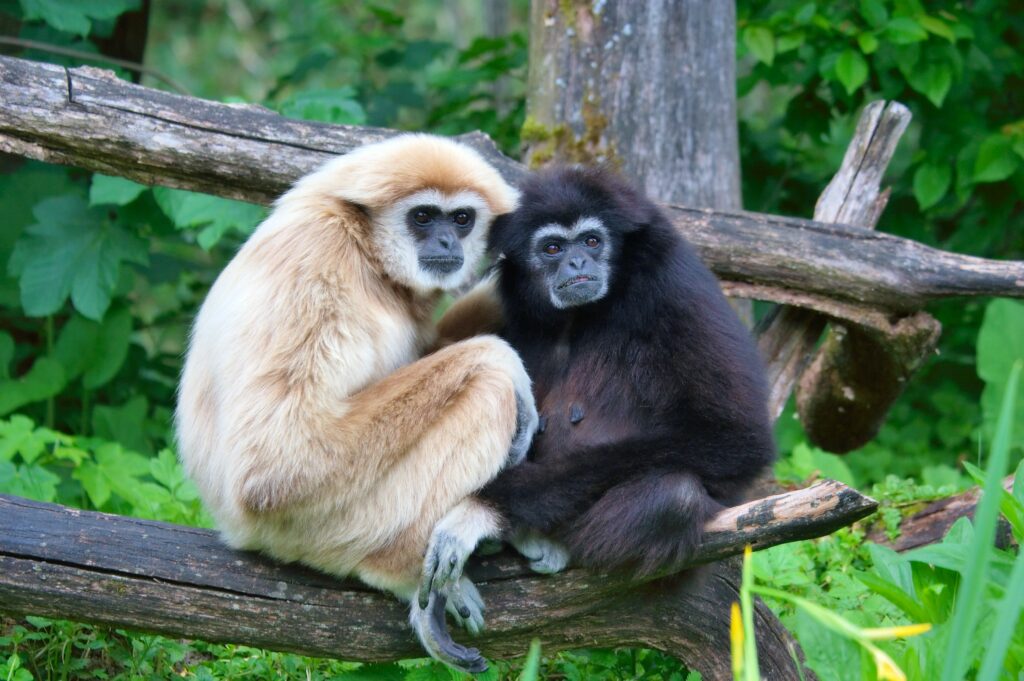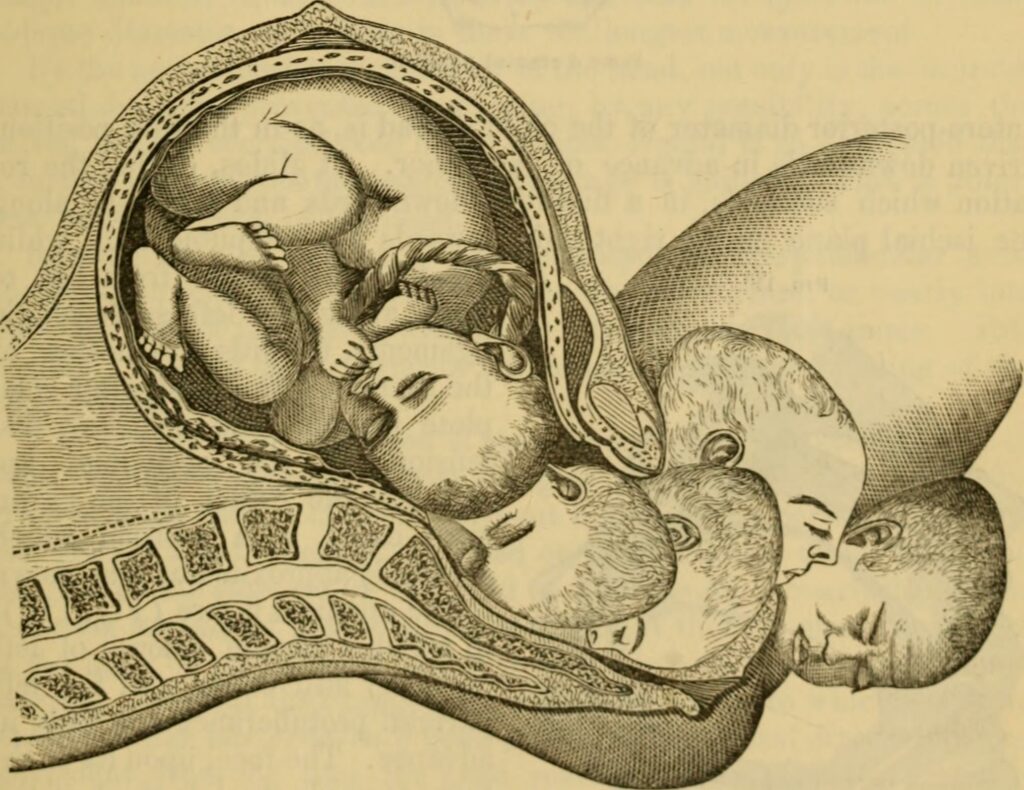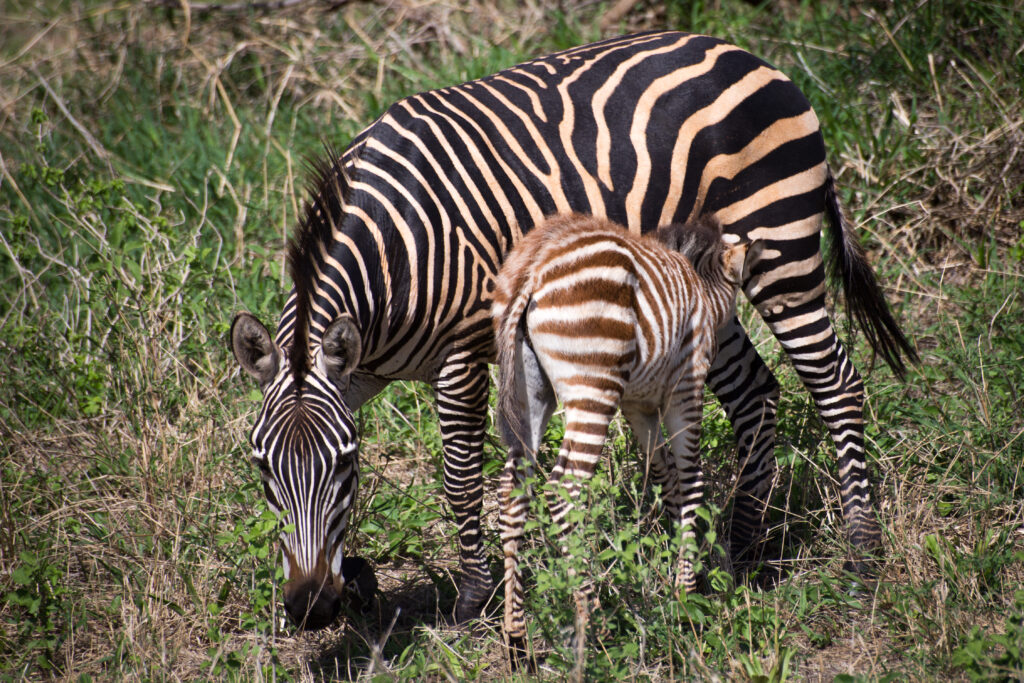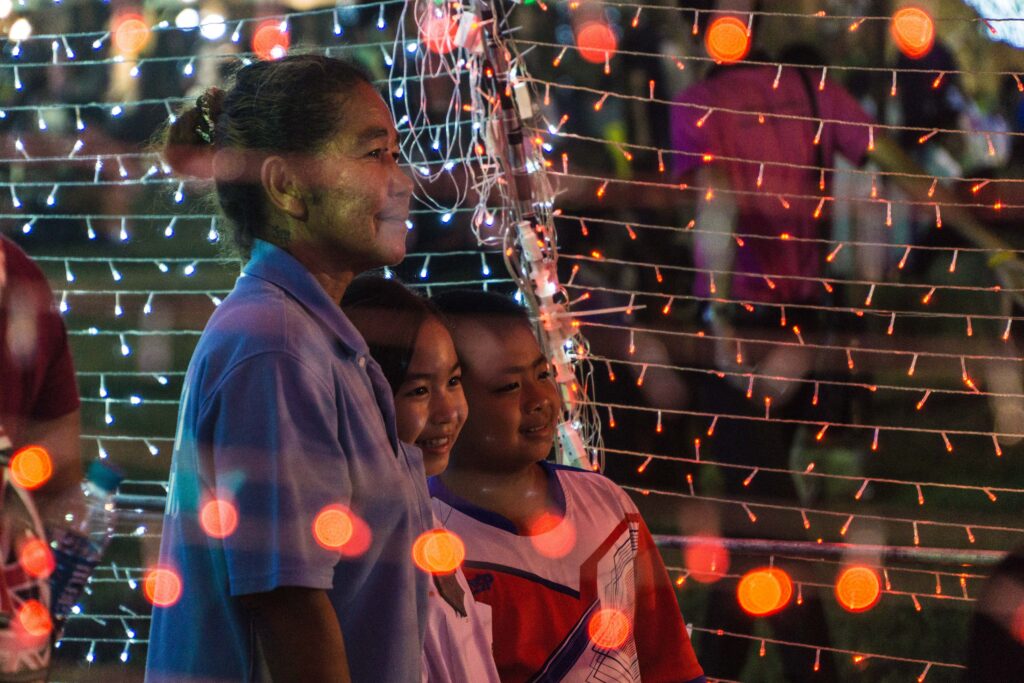Monogamy. Grandmas. Milk. The Evolution of Childhood Is Very Strange.
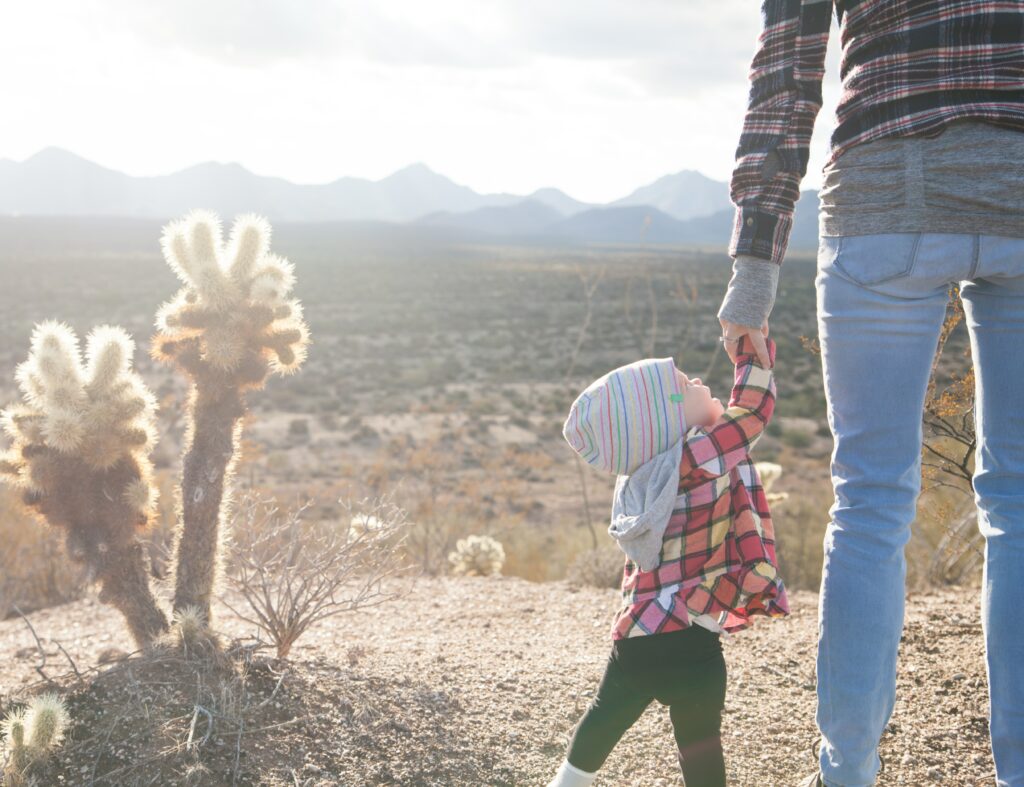
This article is excerpted and adapted from Growing Up Human: The Evolution of Childhood by Brenna Hassett, run with permission of the author, courtesy of Bloomsbury Sigma, an imprint of Bloomsbury Publishing Plc. © Brenna Hassett, 2022
Humans are weird. We’re weird for many reasons, including planetary domination, plus a long tale of lost penis spikes, viral body parts, unripe yet overly large babies, shapeshifting milk, and that radical force of evolution: grandmothers.
One of the most startling adaptations our species has made is the long, long journey we make to grow up human. We take nearly the same time to grow up as a 100-ton bowhead whale, who is going to live at least a century longer than us. The path to making such an incredible investment in our forever-children has made surprising turns throughout our history. Many of these twists are only now coming to light as new generations of researchers ask new questions. Here is a sampling of the myriad ways people are strange.
MONAGAMY IS MYSTIFYING
Humans are, by and large, monogamous, which is exceedingly rare in the animal kingdom. Less than 10 percent of animal species opt for monogamy. That number is even smaller if you leave out birds, 90 percent of whom are dead keen on pairing up.
About 15 percent of primate species settle for “The One.” Monogamy in primates is almost exclusively observed on the small, adorable, lemur-laden branches of our family tree, which includes gibbons, siamangs, marmosets, and tamarinds. These animals are not our closest relatives by a long shot. But we share many of the physical traits associated with the relatively non-competitive monogamous mating strategy. Humans, like other habitual pair bonders, lack the genital embellishment of more sexually rivalrous species, such as comparatively larger testes and a larger phallus, support structures like an os baculum (penis bone) or penis flanges, and (thankfully) penis spikes.
At first glance, monogamy does not sound like a particularly brilliant idea. It’s a resource sink. For males who actually do parenting, like in humans and titi monkeys, hauling around a dependent is a terrible drain on energy, and perhaps the worst thing you could do if you were looking to trade up for a better mate.
Theories for why any species would adopt monogamy abound. One possibility is that pair living results from females trying to recruit protection from males killing their infants or from male aggression in general. Another hypothesis is that couplehood results from males devoting themselves full time to ensuring no one but they have a chance to mate with a particular female. Pair bonds might have developed for males to secure access to mating when females are scarce and prone to wander, or for females to secure a male defender in environments with a high risk of predation.
Monogamy doesn’t make intrinsic sense if the goal is to have as many babies as possible. But once you add an incredibly helpless, demanding baby, the calculus changes, and you can start to see how necessary it is to have multiple investors in offspring.
That may be our story: Human babies are costly, weird, and absolutely useless—and it’s a minor miracle we have them at all.
PLACENTAS ARE PECULIAR
Human pregnancies are facilitated by a funny little organ called the placenta. This sac forms in most mammals when they get pregnant, and only when they get pregnant. It acts as a sort of filter between the mother and the embryo that otherwise would be identified as a foreign body and summarily expelled.
Placentas are necessary for the prolonged siege an embryo makes on its mammal mother. Placentas filter nutrition, waste, and things that might damage the fetus. They also import the maternal antibodies that protect the baby and keep it in an actual blood bath—bathed in a constant stream of blood-borne nutrients.
So far, so weird. But wait. The placenta isn’t even, strictly speaking, human.
The genetic code that tells your body to make syncytin, the substance that creates the placenta, actually comes from an RNA virus. Sometime around 130 million years ago, something in our ancestors captured the bit of something we now call the human endogenous defective retrovirus (HERV-W) and harnessed its ability to make syncytin into the ability to make placentas. So, thanks to a virus, we can grow our young inside us instead of outside in tasty egg-shaped predator snacks.
Human birth is risky, painful, and something we are just not very good at.
What’s more is that in humans, the placenta isn’t just a filtration system, it’s an infiltration system. It attaches right up into our uterine wall, plumbing directly into Mom to give baby far greater access to the nutrition it needs to grow—and far greater control over the mother than any other primate species. Human placentas regulate the flow of nutrition in and out in a remarkably non-even-handed way, favoring the fetus over the mother in ways that can, if they go wrong, kill her.
Placental control of the main arteries that send blood to the baby mean that if the baby ever feels it is not getting the nutrition it needs, it can start demanding more by pulling more blood through. Mama’s blood pressure goes up and, if not checked, she can go from hypertension headaches to the swelling of preeclampsia straight through to seizure, stroke, and death.
BIRTH IS A HEALTH HAZARD
In humans, birth is notable primarily for how awkward we find it.
Other animals manage to have babies without making quite such a song and dance about it. While no one is likely to top the poor hyena in terms of labor horror stories—giving birth through a penis-shaped clitoris to a baby with a full set of teeth is a high-water mark no one wants to surpass—human birth is risky, painful, and something we are just not very good at.
It is absolutely extraordinary we even exist given that mortality for women giving birth without access to medical assistance is over one in 100. And that’s not a one-time thing; the risk repeats with every birth. That’s like buying a car that has a one in 100 chance of the brakes going out each year.
In biology classes, people are typically taught a certain evolutionary narrative about why human births are so difficult. As our ancient ancestors started to walk upright, the shape of their pelvis changed to accommodate the new savanna swagger. At the same time, brains were expanding, perhaps because of all the new foods we could efficiently walk to.
This led to what anthropologist Sherwood Washburn coined the “obstetrical dilemma.” The human baby head is usually ever so slightly bigger than the pelvis passage from which we wish it to exit, creating a serious sofa-in-the-staircase situation. The other great apes have not made this mistake. But more dangerous births are the price we pay for our walking, talking lifestyles.
So far, so good. Except no one told the squirrel monkeys. Tiny brained, non-walking squirrel monkeys, it turns out, are also bad at birth. In captivity, they experience up to 50 percent mortality. We now know that a lot of the physical adaptations to birth that we attributed to our human bad luck exist in other primates. We used to think that because female hips are wider than male hips, this signaled an evolutionary adaptation to the tight fit of a big-brained baby in a walking pelvis. But we know now that almost all mammals have differences between male and female hips.
Human babies have made a few accommodations to this ridiculous state of affairs. One is having a puzzle-like skull and a head that easily deforms and bounces back. The other is a sort of mini dance move. As the baby comes down the birth canal, its head turns to present the least possible obstruction to the bony cage of the pelvis. Researchers once believed this “twist” was uniquely human. Actually, several other primates do a little turn on the pelvic floor: gibbons, macaques, and those unfortunate squirrel monkeys.
MILK IS MIRACULOUS
Every mammalian species produces a specific milk recipe that has been honed down the generations to provide optimal nutrition for its babies. Humans generate milk that is about 4 percent fat, 1.3 percent protein, 7.2 percent carby-sugary lactose, and 90 percent water. This is in sharp contrast to the Arctic-dwelling hooded seal, whose milk is laden with 60 percent fat.
The human milk recipe is almost exactly the same as the zebra’s because both our species are accustomed to being in close, nearly constant contact with our mothers. So human and zebra moms make relatively dilute, watery milk that can be given at leisure throughout the day because the baby is always there.
But the human milk recipe constantly shifts. The milk at the beginning of a feed isn’t even the same as the milk at the end of a feed. “Foremilk,” which comes down first, tends to be the high-sugar stuff, with more water content to rapidly get baby the sugar hit it is craving. The “hindmilk” has two to three times as much fat, the better to fill baby up. In hot weather, mothers produce more watery milk to protect baby against dehydration—something zebras also do and another reason our milks might be similar.
Milk at the beginning and end of the day is a lot lower in fat than in the afternoon. Morning milk is full of get-up-and-go cortisol. Nighttime milk has massively elevated levels of melatonin and tryptophan, the sleepy stuff commonly associated with eating too much turkey. Even the levels of immune-boosting and full-feeling factors in milk change over the course of the day.
GRANDMOTHERS ARE RADICAL
Grandmothers, it must be said, are not something you would expect. The models of how a species might spend its lifespan rely on an evolutionary trade-off between long periods of immaturity that result in greater adult size and capacity for reproduction or a quicker march toward adulthood to get lots of reproduction in before you die. Nowhere in this model is there room for life after adulthood’s reproductive function. Yet here we are, awash in females who are not reproductive and still not dead.
An incredibly small number of animals live past the ability to reproduce. Even our own species’ males maintain some generative capacity until the end of their lives. Here are some animals with grandmothers who are done having babies: orcas, short-finned pilot whales, us. Here are some animals without grandmothers: every other animal in the world.
But grandmothers do still contribute to their babies—by helping with their babies’ babies. This is the “grandmother hypothesis,” proposed by anthropologist Kristen Hawkes and colleagues in a 1989 paper that emerged from their observation of family life among the Hadza in Tanzania. The authors proposed that Hadza grandmas improve the reproductive fitness of their genetic line by bringing resources to their offspring with young children. This puts some of the burden of providing for a grandchild onto themselves so their daughters might have the reserves to reproduce again successfully.
Not for nothing are humans the fastest-breeding great ape on the planet, churning out babies quickly after the milk-drinking stage. This, then, is our secret weapon against our incredibly demanding babies. Care. From grandmothers, from dads, and from aunties and uncles. These helpers are how we provision a baby who is too big, too helpless, and needs too much.
Our extraordinarily long childhoods start to make sense when you consider the huge investment we have to put into them. We have even clawed back some time from the other end of our lifespan, shutting down reproduction early and creating the utterly unlikely phenomenon of grandmas.
So perhaps this is the real story of our most fascinating but overlooked evolutionary adaptation. Our babies need more. More time and more investment. And this is how we have evolved the very long intermission you and I call childhood.

































